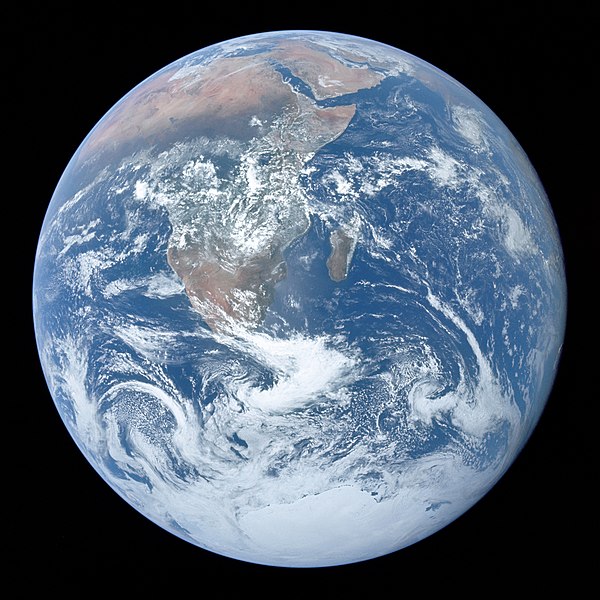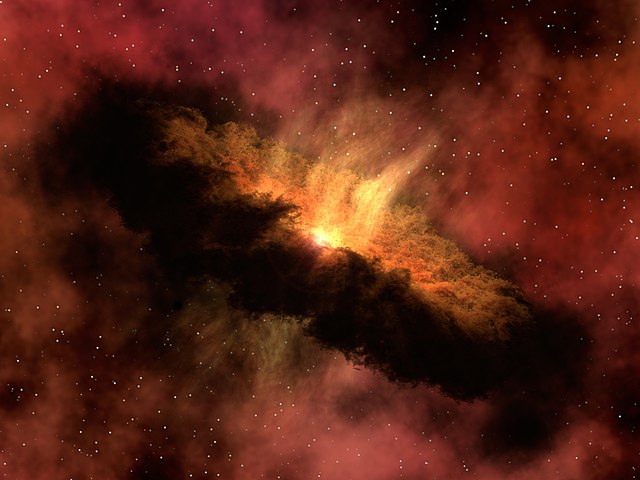The Moon is Earth's only natural satellite. It orbits at an average distance of 384,400 km (238,900 mi), about 30 times the diameter of Earth. Over time Earth's gravity has caused tidal locking, causing the same side of the Moon to always face Earth. Because of this, the lunar day and the lunar month are the same length, at 29.5 Earth days. The Moon's gravitational pull – and to a lesser extent, the Sun's – are the main drivers of Earth's tides.
Near side of the Moon, lunar north pole at top
Size comparison of the main moons of the Solar System with Earth to scale. Nineteen moons are large enough to be round, several having subsurface oceans and one, Titan, having a considerable atmosphere.
The thin lunar atmosphere is visible on the Moon's surface at sunrise and sunset with the lunar horizon glow and lunar twilight rays, like Earth's crepuscular rays. This Apollo 17 sketch depicts the glow and rays among the general zodiacal light.
Gene Cernan with lunar dust stuck on his suit. Lunar dust is highly abrasive and can cause damage to human lungs, nervous, and cardiovascular systems.
Earth is the third planet from the Sun and the only astronomical object known to harbor life. This is enabled by Earth being a water world, the only one in the Solar System sustaining liquid surface water. Almost all of Earth's water is contained in its global ocean, covering 70.8% of Earth's crust. The remaining 29.2% of Earth's crust is land, most of which is located in the form of continental landmasses within Earth's land hemisphere. Most of Earth's land is somewhat humid and covered by vegetation, while large sheets of ice at Earth's polar deserts retain more water than Earth's groundwater, lakes, rivers and atmospheric water combined. Earth's crust consists of slowly moving tectonic plates, which interact to produce mountain ranges, volcanoes, and earthquakes. Earth has a liquid outer core that generates a magnetosphere capable of deflecting most of the destructive solar winds and cosmic radiation.
The Blue Marble, Apollo 17, December 1972
A 2012 artistic impression of the early Solar System's protoplanetary disk from which Earth and other Solar System bodies were formed
Pale orange dot, an artist's impression of Early Earth, featuring its tinted orange methane-rich early atmosphere
Conjectured illustration of the scorched Earth after the Sun has entered the red giant phase, about 5–7 billion years from now








